NAIT instructor Jan Slaski planting seeds of change
When he decided to take up farming part-time six years ago, Roy Renneberg (Welder ’90) did a very Alberta thing and planted hay.
Still employed in the construction industry, the native of Cudworth, Sask. grew up on a farm and hay seemed like a comfortable choice. But when Ottawa announced plans to legalize cannabis and update rules around industrial hemp, its non-stoner sister plant, a seed of inspiration was planted.
Hemp was an unknown, but after doing some research Renneberg was intrigued with the prospect of a crop that could produce revenue from every part of the plant – seeds, flowers, leaves and stalks.
“I thought, this could get very interesting and that’s where we went with it,” he says.
“I think it’s a great crop for any farmer to grow.”
Renneberg and his brother, Clayton, planted their first 80 hectares of organic hemp last year on their farm near Sherwood Park. Dry conditions prevented a bumper crop, but they still believe in hemp’s potential in Alberta.
“I think it’s a great crop for any farmer to grow,” he says. “Just talking to people in the industry, it looks like the acres [planted] will be considerably more this year.”
After languishing for decades under restrictive rules, hemp could be a boon to Alberta farmers – including those feeling the sting of China’s ban on Canadian canola or diseases such as clubroot. Canadian hemp is sold as seeds for food to markets in the United States and Asia, and interest is surging for health products. That, coupled with the plant fibre’s versatility for manufacturing, has some predicting the export market could balloon from $140 million in sales this year to $1 billion within five years – with Alberta as a potential “hemp hub.”
Still, that won’t be easy. Hemp can be hard to grow, and it’s burdened with pot-fuelled misconceptions, putting off some farmers. To its advantage, however, it has a champion in NAIT instructor Dr. Jan Slaski, who may be about to finally reap the rewards of his decades of efforts at a rural Alberta research facility.
Hemp’s complicated history
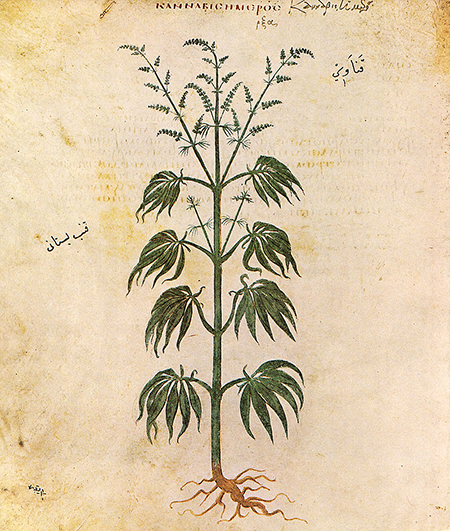 Misperceptions about hemp are rooted in history and misdirected efforts to crack down on the drug trade. The fast-growing, tall (some varieties reach up to 4.5 metres) and somewhat spindly sister of marijuana, hemp was banned in 1938 with the passage of the Opium and Narcotic Drug Act, some 16 years after marijuana prohibition. Prior to that, hemp was grown for fibre for clothing, rope and paper. Its origins in Canada pre-date confederation.
Misperceptions about hemp are rooted in history and misdirected efforts to crack down on the drug trade. The fast-growing, tall (some varieties reach up to 4.5 metres) and somewhat spindly sister of marijuana, hemp was banned in 1938 with the passage of the Opium and Narcotic Drug Act, some 16 years after marijuana prohibition. Prior to that, hemp was grown for fibre for clothing, rope and paper. Its origins in Canada pre-date confederation.
Restrictions on hemp remained until 1998 when commercial growing was allowed, licensed and controlled by Health Canada.
“You can’t get high from rolling industrial hemp.”
Being part of the hemp industry’s revival after 60 years was what initially attracted – and worried – Slaski, a crop scientist who oversees hemp and cannabis applied research for InnoTech Alberta, an arm of Alberta Innovates.
In his early days at InnoTech (formerly the Alberta Research Council), Slaski says he encountered a lot of misconceptions about hemp from farmers and industry alike because of associations with marijuana (including a former agriculture minister who wanted nothing to do with it). Perceptions have improved over time, but some of the myths continue to linger.
“Even recently, I heard someone say, ‘I don’t eat hemp [seeds] because don’t want to get high.’”
Hemp and marijuana are varieties of the same species, cannabis sativa, and to the uninitiated look and smell alike. The key difference is that hemp contains no more than 0.3% tetrahydrocannabinol, or THC – the psychoactive cannabinoid in weed that gets you high.
“You can’t get high from rolling industrial hemp,” says Slaski. “That’s critical to understand.”
The hemp evangelist
For nearly two decades, Slaski, who also teaches about technology, experts and society in NAIT’s Bachelor of Technology - Technology Management program, has preached the benefits of hemp as both a superfood and super-sustainable bio-industry. His research touches every aspect of the plant: breeding, agronomy, fibre processing, even product development and commercialization.
Slaski started with the Alberta Research Council in 1998, not long after the legislative changes. His turning point with hemp came around the same time when he was approached by a pulp and paper executive who was interested in using hemp fibre for its products and wanted Slaski’s help making it happen.
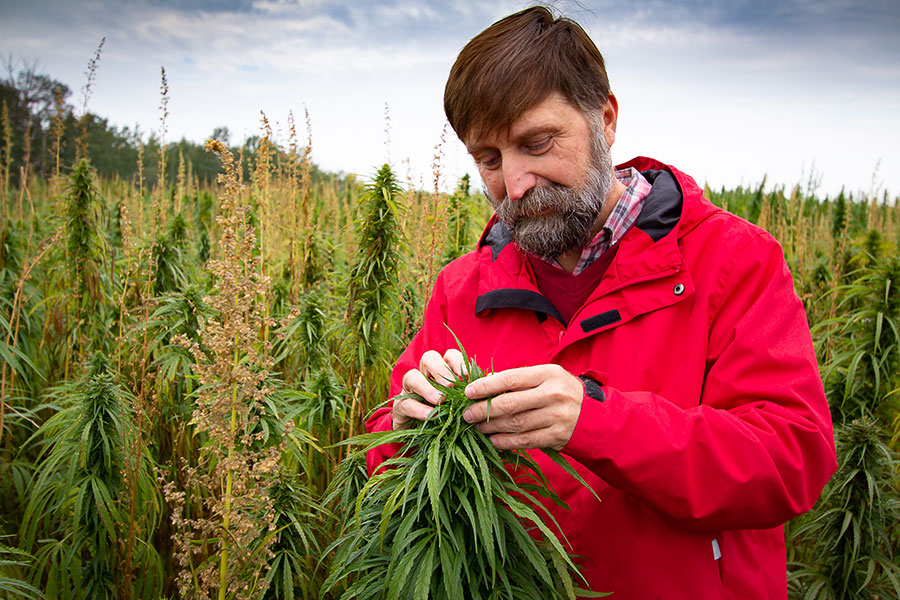
It was no small ask; according to his calculations, 20,000 hectares (50,000 acres) of hemp would have been required to satisfy the company’s fibre needs. At the time, only about 1,200 hectares (3,000 acres) were being grown in the entire country.
“There’s no other crop on the Prairies that every single bit of the plant can be used."
“I said, that’s not feasible. Nobody can get from 3,000 to 50,000 of a crop that doesn’t exist. There’s no seeds, there’s no production technology, there’s no equipment, no know-how – no nothing.”
The partner company eventually backed away from the project, but by that point Slaski’s interest in hemp research was as strong as its fibres.
“There’s no other crop on the Prairies that every single bit of the plant can be used, can be sold for money and something good can be derived from it,” he says.
Hemp fibre’s “northern advantage”
Compared to wheat (3 million hectares grown in 2018) or canola (2.8 million hectares), hemp remains a niche crop in Alberta at 12,000 hectares, roughly a third of the Canadian crop. In fact, Ottawa lumps hemp with spelt, quinoa and fenugreek as “other field crops.”
Hemp seeds have found a market as a protein and fibre-rich food, often served as a salad topping or in smoothies. But if there was one true Alberta advantage for hemp, it’s in those woody, fibrous stalks.
That’s why InnoTech’s pilot fibre processing plant in Vegreville was built and remains “the only one of its kind in the world,” Slaski says.
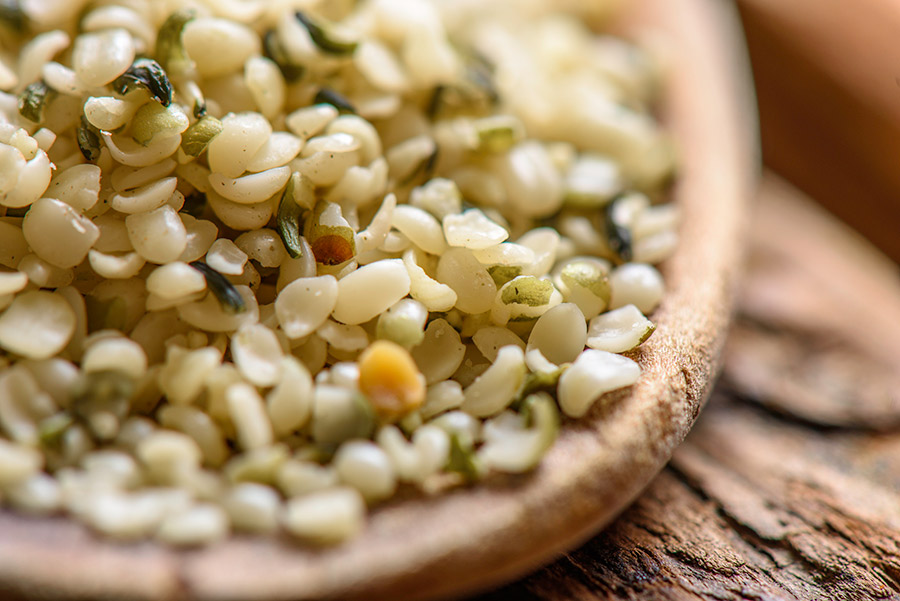
Commissioned in 2011 after a $5-million investment from the province, the research and development facility has demonstrated the potential of hemp fibre – traditionally considered a throwaway “byproduct,” he says.
The plant takes bales of industrial hemp stalks and separates them into fibres, which can then be turned into textiles, paper products, building materials or biofuels.
“Because of our program, Alberta right now is the hub of the industry.”
About 95% of biocomposites made in Alberta received fibre from the Vegreville facility, Slaski says.
“Because of our program, Alberta right now is the hub of the industry,” he says. “We have an opportunity to be the North American hub for fibre-related processing and manufacturing.”
Grassroots industry
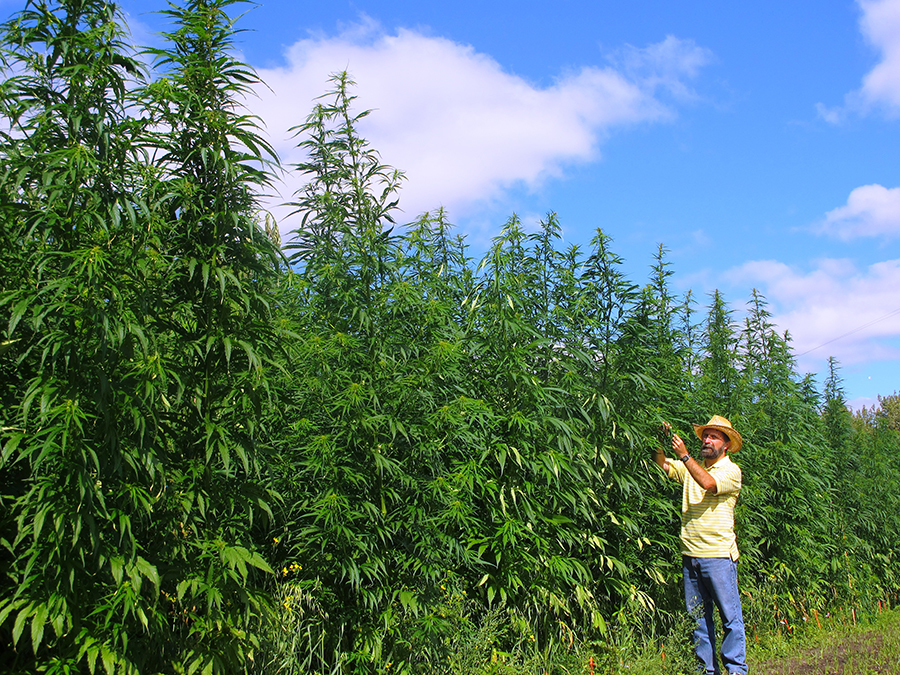
Local industry is starting to recognize hemp’s potential. In Drayton Valley, BioComposites Group takes processed hemp fibres and turns them into a growing lineup of grow mats, pressed fibre boards and car parts for automakers in Detroit. Airdrie’s Just Biofiber transforms the woody core, or hurds, into interlocking fibre blocks called hempcrete, which look like giant homemade lego, have a high insulation value and are nearly fireproof.
This past spring, Canadian Rockies Hemp announced construction on a 40,000-square-foot hemp processing facility in Bruderheim, about 60 kilometres northeast of Edmonton. It’s a much larger, more advanced version of InnoTech’s pilot plant, capable of producing hemp fibre, hurds, screenings (pellets made from hemp dust) and CBD for manufacturers to produce everything from fibreglass to beauty products to textiles. It will be able to process up to 20,000 hectares of hemp – more than half of last year’s crop for the entire country.
Slaski credits the plant’s existence in part to InnoTech’s pioneering work from seed to fibre, along with north-central Alberta’s prime growing conditions. His research at experimental hemp plots proved the plant grows 20% to 30% taller here than in southern Alberta, where hemp seeds have traditionally been planted, something he calls our “northern advantage.”
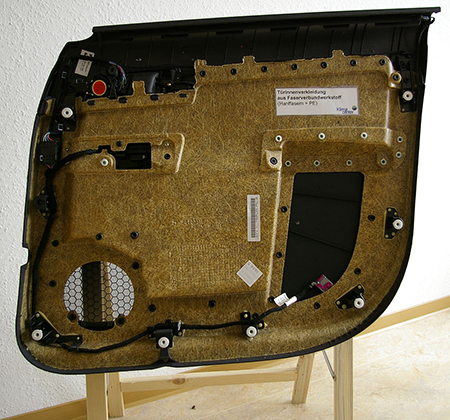
“We have great conditions for growing hemp for fibre,” he says.
Though hemp fibre can be tricky to manage, the plant itself grows like a weed once established. It’s one of the fastest-growing plants in the world after bamboo. In fact, in just 90 days of growth, hemp yields four times the biomass of an average forest that would take 25 years of tree growth, making it a valuable product and carbon-sucking tool in the fight against climate change.
Growing sustainability
Hemp’s sustainability is part of the crop’s appeal for Chad Gendall (Construction Engineering Technology ’13), a construction and extractions specialist with Canadian Rockies Hemp. The construction project manager-turned hemp farmer and cannabis consultant has spent much of his career on sustainable building projects, including co-designing and constructing a 10-square-metre (110-square-foot) solar-powered tiny home made of hempcrete for a sustainable design competition.
Canadian Rockies Hemp will build its Bruderheim office using hempcrete, says Gendall. He points to the rise of companies like Just Biofiber, which has signed on as one of the processor’s first buyers, as proof that hemp and hemp fibre have turned a corner after 30 years of unfulfilled potential. Part of the reason, he says, is that Albertans and Canadians value economic prosperity and sustainability and hemp can offer both.
“The future is great,” Gendall says. “We just need to keep going with educating the general public and create this opportunity for the economy to emerge and diversify.”
Pushing hemp over the hump
Hemp is unlike most crops because it has to be processed. You can’t just harvest and deliver it to an elevator, Slaski says, a complication that makes it a harder sell to farmers.
After just one year of growing, Renneberg recognizes the crop might be too high-maintenance for some preferences. The woody stalks are tough on equipment and either have to be baled for processing or worked back into the soil before next year’s planting.
“It doesn’t break down very quickly – kind of like rope,” Renneberg explains. “As far as ourselves, we went through the school of hard knocks in a few instances.”
“The majority [of farmers] are interested in CBD. I wouldn’t call it a bubble, but they smell a quick buck.”
A big reason why a growing number of farmers even want to attempt to tame hemp fields is because of its potential to produce cannabidiol, or CBD – cannabis’ second-most popular cannabinoid.
Oct. 17, 2018 is widely known as the date Canada legalized cannabis. It’s also when changes to industrial hemp regulations took effect and allowed licensed growers to cultivate the flowers and leaves from which CBD oil is extracted. (It can also be extracted from marijuana plants).
“The majority [of farmers] are interested in CBD. I wouldn’t call it a bubble, but they smell a quick buck,” Slaski says.
Additional legislative changes could help grow the hemp market even further. One of the quirks of hemp regulation is that seeds, which contain no THC, can be sold for human consumption, but not animal feed. Hemp hearts – the inner part of the seed – are popular on salads, but there’s no market for the outer shell, and that leads to waste.
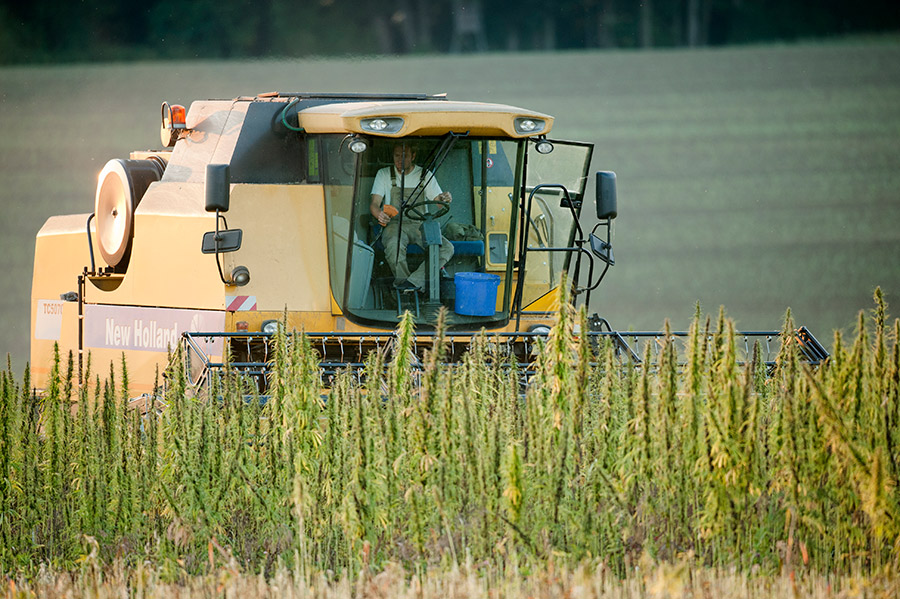
Slaski’s team is conducting tests in the hopes of changing “nonsense” rules by proving that such a byproduct has high energy value for livestock and poses no risk to animals. “We’re wasting a huge, huge opportunity by discarding this.”
Trade relations with China and its ban on canola offers another possible area for growth, with both Slaski and Renneberg saying falling prices have many farmers investigating hemp. “I had three phone calls from farmers only today inquiring about how to grow hemp. And it’s every day,” Slaski says.
Back on the farm, Renneberg is getting ready to plant his second hemp crop, but he isn’t planning on an easy payday. He’s found a buyer for his organic seeds in Manitoba and cleans and collects the leaves and flowers himself, but has yet to find a market for the stalks, though that could change with increased processing capacity in Alberta. That’s why, for now, he still works the construction industry as his main source of income. As the market continues to grow and evolve, he hopes that will change in the next few years, and that he’ll be able to focus his efforts on farming full time.
“Hopefully, hemp will help us do that.”
The CBD gold rush
There’s a lot of buzz about CBD, which has been used as an anti-seizure medication for epilepsy and has been touted as a treatment for anxiety, multiple sclerosis and arthritis. It’s also the star ingredient in a growing number of beauty and lifestyle products, with celebrities like Martha Stewart jumping on the bandwagon with CBD products for people and pets.
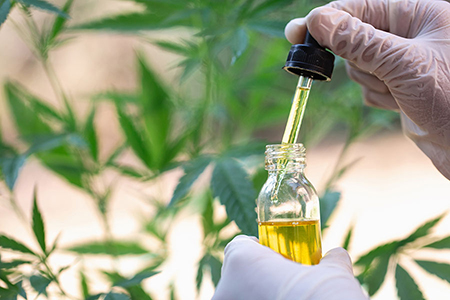 Five years ago, one kilogram of CBD was selling for about $40,000, or about $80,000 per hectare of crop, says crop scientist Dr. Jan Slaski – tens of thousands more than the few hundred dollars farmers see with grain crops. “You don’t need to grow anything else,” he says.
Five years ago, one kilogram of CBD was selling for about $40,000, or about $80,000 per hectare of crop, says crop scientist Dr. Jan Slaski – tens of thousands more than the few hundred dollars farmers see with grain crops. “You don’t need to grow anything else,” he says.
Demand for CBD oil has increased supply and brought prices down to $4,000 to $8,000 per kilogram, but farmers still want a piece.
Cannabis and hemp consultant Chad Gendall understands the interest, but also points out that extracting CBD from hemp is challenging. He notes that most hemp varieties approved for cultivation in Canada were bred for seeds or fibre and are actually low in CBD.
“There have been people extracting those low amounts, but it’s really hard,” says Gendall, who is also a project manager with Token Naturals, which is building a 840-square-metre (9,000-square-foot) cannabis processing lab in Edmonton. That could change as new hemp varieties are bred with higher concentrations of CBD, which he predicts will happen, but that will also take time – potentially several years when factoring in regulatory approvals.